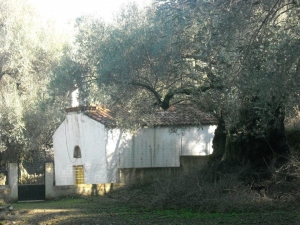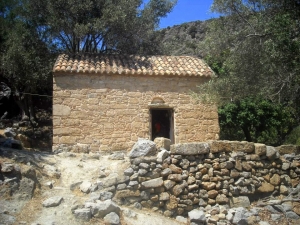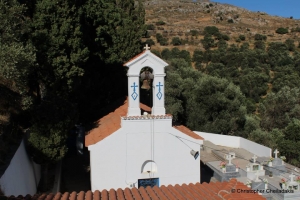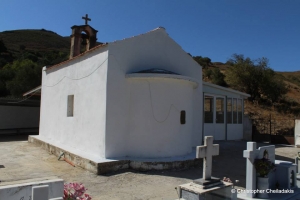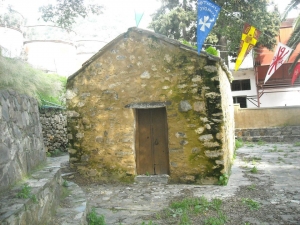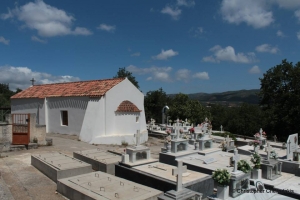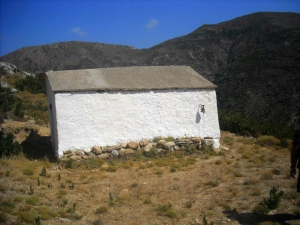The church of St Anna at settlement Anisaraki by Kandanos is one of the most important Byzantine churches of Crete, adorned with very important frescoes dating back from 1457-1462. The iconostasis was painted and bears wooden screen.
Saint Kirikos or Kirkos is located at the archaeological site of Lissos, on the site of a former Early Christian Basilica and gives its name to the entire valley of Lissos. The vaulted church has Byzantine frescoes, unfortunately damaged.
At Selino Province we meet the deserted (two centuries ago) settlement of Kalogerou. The settlement was decimated due to plague and soon totally forgotten. The area is wooded with perennial olive trees and is crossed by the stream that then comes into the gorge of Sassalos. The village, possibly built around a small monastery, still hosts the small chapel of St George that bears important, but damaged, frescoes.
Asfendiles of Selino province is a small mountainous hamlet, one of the remotest in Crete. It is the cemeterial temple of the village and is located between the two neighborhoods of Asfendiles. The white church is aisleless, like most temples in the province and quite simple (outside). Only its elevated bell tower protrudes.
The church of St. George at Floria bears frescoes of Ioannis Provatopoulou (date 1497). Among the paintings there is a representation of the donor of the church (right of entry), while outside the temple we see an embossed decoration.
At village Kambanos in Selino province we meet the small and single-room church dedicated to Saint Onoufrios (Onuphrius). The cinterior bears samples of frescoes dating back to the Venetian era.
Very well hidden at a dense grove with oak trees and ancient olive trees is the cemetery church of Agia Kyriaki at Labiriana, Selino district. The very small settlement is just 2km away from Kandanos. Agia Kyriaki feast takes place on July 7, and is dated to 14th century or maybe later.
From Prodromi village of Selino province starts a dirt track leading eastwards to the gorge of Lissos. On the way we meet the small, single-aisled church of Saint George (Agios Georgios). The interior bears frescoes dating back from the 14th century by Ioannis Pagomenos, one of the most famous painters of Eastern Crete.











